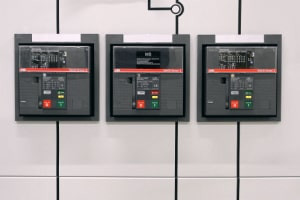This course provides all the knowledge required to help you master the fundamentals of the protection systems used to safeguard motors and busbars against faults in a power system network. We use sizable high voltage (HV) induction motors to drive water pumps, fans and other auxiliary items in industries and power generating systems. We therefore cannot overemphasise the crucial roles they play. The damage of a motor due to any type of fault causes a decrease in production and loss of revenue so the protection of induction motors is essential for their reliable performance. This course will first uncover the different types of faults or abnormal conditions experienced in motors. Then we explore the types of protection commonly used for every fault. We introduce you to busbars and teach you how to protect them against faults. A busbar is the junction of an electrical network where many lines are connected. The busbar protection scheme operates and trips all the transmission lines connected to the busbar whenever a fault occurs. We explain why it is crucial to safeguard the busbar from damage and prevent potentially prolonged power outages. You will therefore learn the various protection schemes for busbars and the different ways to arrange them.
Next, we will discuss protection against transients and surges. First, discover the sources of transients and surges and the various protection schemes used for these faults. We introduce the arc interruption theory and discuss Slepian’s theory, Cassie’s theory and the theory of arc quenching. We outline how the quenching of an arc in an AC circuit requires a mechanism that converts the conduction path across the contacts of a circuit breaker into a non-conducting path. We then highlight the concept of current-chopping, which is the interruption of small inductive currents.
Finally, we describe the different types of circuit breakers that fall under two broad categories of ‘low’ and ‘high’ voltage circuit breakers. Switches, fuses, miniature circuit breakers and earth leakage circuit breakers are part of the low voltage circuit breakers, which we will break down to help you grasp the concepts. We investigate air brake circuit breakers, oil circuit breakers, vacuum circuit breakers and sulphur hexafluoride circuit breakers, collectively known as ‘high voltage’ circuit breakers. Then, to conclude, you will learn the types of tests usually performed on relays and the commissioning and maintenance of relays. The protection of motors, busbars and other critical components of a power system network is essential. This course will thus benefit professionals in power system networks seeking to refresh or expand their knowledge base and anyone considering a career in the field of power systems protection. So why wait? Start this course today!
What You Will Learn In This Free Course
View All Learning Outcomes View Less All Alison courses are free to enrol, study, and complete. To successfully complete this Certificate course and become an Alison Graduate, you need to achieve 80% or higher in each course assessment.
Once you have completed this Certificate course, you have the option to acquire an official Certificate, which is a great way to share your achievement with the world.
Your Alison certificate is:
- Ideal for sharing with potential employers.
- Great for your CV, professional social media profiles, and job applications.
- An indication of your commitment to continuously learn, upskill, and achieve high results.
- An incentive for you to continue empowering yourself through lifelong learning.
Alison offers 2 types of Certificate for completed Certificate courses:
- Digital Certificate: a downloadable Certificate in PDF format immediately available to you when you complete your purchase.
- Physical Certificate: a physical version of your officially branded and security-marked Certificate
All Certificate are available to purchase through the Alison Shop. For more information on purchasing Alison Certificate, please visit our FAQs. If you decide not to purchase your Alison Certificate, you can still demonstrate your achievement by sharing your Learner Record or Learner Achievement Verification, both of which are accessible from your Account Settings.











 Avg. Hours
Avg. Hours  Contains Video
Contains Video  CPD Accredited
CPD Accredited 
 Total XP:
Total XP: 
 Knowledge & Skills You Will Learn
Knowledge & Skills You Will Learn 







